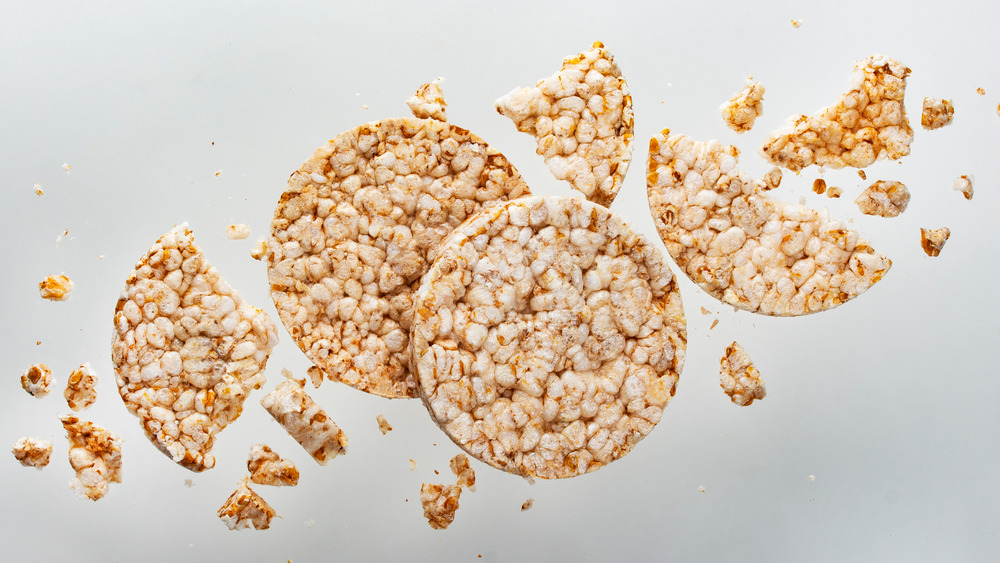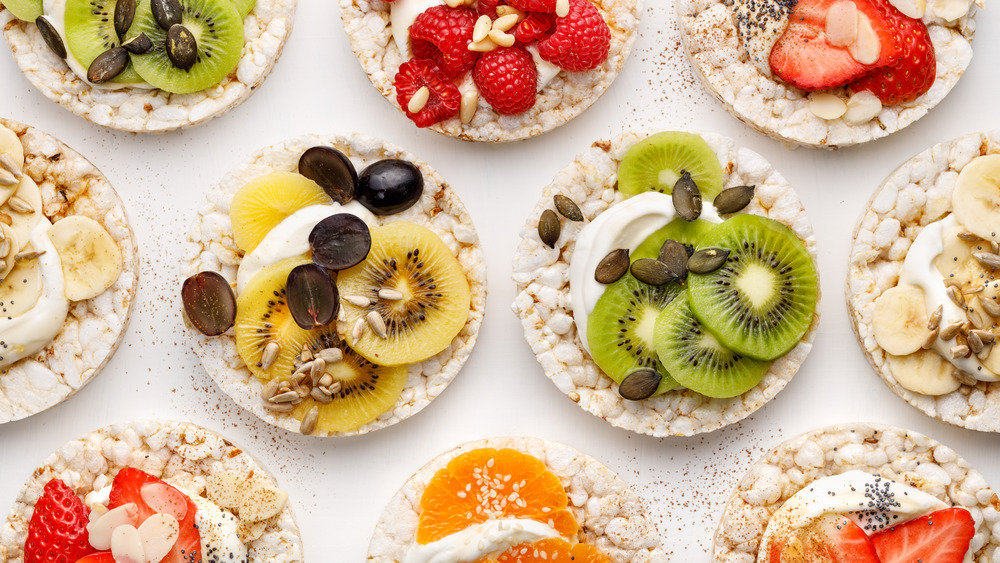Rice Cakes: Are They Really Good For You?
The phrase 'rice cake,' is not likely to make your mouth water in sweet anticipation. Rather, you might think 'cardboard.' Not a meal and definitely not a dessert, what exactly is a rice cake? According to Healthline, a plain rice cake is pretty much air and puffed rice. A single, plain, rice cake typically has thirty-five calories, seven grams of carbohydrates, and barely any fat at all. They are also not particularly nutrient dense, with manganese as its top nutrient, at 17 percent of the reference daily intake (RDI).
Dr. Kelly Pritchett, National Media Spokesperson for the Academy of Nutrition and Dietetics, says that while rice cakes aren't going to hurt you, they're not particularly healthy either (per Verywell Fit). Pritchett suggests choosing rice cakes made from brown rice for a slightly healthier option, and to choose plain over flavored, to avoid excess sugars and additives. She also suggests checking for the sodium content, as some brands have a higher amount than others.
Rice cakes can be a healthy alternative
Plain rice cakes can be spruced up with healthy foods, to make for a nutritious snack. They can provide a guilt-free crunch, as they are lower in calories than most crackers and breads (via Healthline). According to dr. Pritchett, rice cakes have a relatively high glycemic index, but that can be balanced by eating them with protein, which can help level blood sugars.
Registered dietician Frances Largeman-Roth suggests pairing plain rice cakes with nutrient rich foods like mashed avocado, almond butter, or hummus for a healthy snack (per Eat This, Not That!). While this is a good way to get in your nutrients, Largeman-Roth says most people won't bother adding the healthy part, and will find themselves eating half the sleeve of rice cakes instead.
In summary, these flavorless, low calorie cakes are not as healthy as you may have hoped, having hardly any nutritious value, but they can be properly prepared as a healthy snack, if you crave a crunch.


